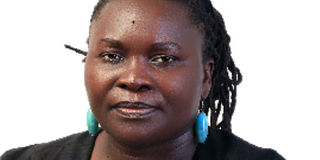Lets model women for better media leadership

This year’s theme for the International Women’s Day is ‘Women in leadership: Achieving an equal future in a Covid-19 world.’ The idea of achieving an equal future post Covid-19 seems far-fetched. Yet, it is possible to be deliberate in pursuing that goal.
The role of women in leadership has been the main topic whenever the subject of women’s empowerment is brought up.
‘Increase the number of women in leadership if you want to see results’ we are often told. Policy makers have gone ahead to not only create affirmative action to that effect, but also some, such as in Uganda, created quotas for women in politics.
The media has had similar calls.
The Beijing Platform of Action of 1995 recommended media as one of 12 critical areas of action. Objective J.1 was to increase the participation and access of women to expression and decision-making in and through the media and new technologies of communication; while J.2 sought to promote a balanced and non-stereotyped portrayal of women in the media. All this would be possible with more women in media management.
Since then, there has been sustained effort in establishing who makes news. The Global Media Monitoring Project (GMMP) has since 1995 done incredible work in documenting efforts and progress. The reports rarely bear good news, recording dismal progress every five years.
Still, the GMMP that is coordinated by the World Association for Christian Communication (WACC), a global network of communicators that promotes communication for social change , is arguably one of the most important innovations in the field of gender equality in news and journalism. Their rigorous research has gone a long way in tracking progress and identifying problems.
The preliminary report of 2020 coming ahead of the 2021 International Women’s Day indicates that some good progress has been made, particularly in the proportion of stories reported by women and those reported by men on television, while 48 percent of telecast news are reported by women.
It also shows that small incremental changes have been made towards parity in subjects and sources particularly in broadcast news, although the pace of change is small. These gains are worth celebrating.
Sadly, the preliminary report also noted that the news media remains far from being inclusive spaces for women, vulnerable women and historically marginalised groups.
Years of advocacy from numerous sources have only yielded small changes even in countries known for scoring highly in women’s empowerment. The final report expected sometime in May will present gender analysis of news in 120 countries.
This is not the only report that details the nature of gender inequality in media. The Glass Ceiling Project in South African has documented progress on gender in South African newsrooms. Others like the International Women’s Foundation for Media have all done a lot of work.
It is important that while we highlight the role of women in leadership, women are not expected to carry the burden of gender equality aspirations alone.
What I have found is that there is often unrealistic expectation on female media managers to do it all when it comes to increasing participation of women and reducing stereotypical portrayal of women. They are in turn accused of not doing enough to ensure young women rise.
As we continue to look for solutions to gender inequality in news, two things that are not new but can be enhanced make important areas of intervention.
First, to create an environment that makes mentorship possible. But mentorship should not be limited to the women in media management, who are often very few.
Every media house should have a mentorship guideline which can encourage young women to do well. Like all people starting in a career, support is needed.
And because media is often a challenging environment, favourable policies on maternity, equal pay and fair chance for promotion can help close gaps.
Second, there is need to create a work culture where women in media management can easily model journalistic excellence for young women. There should be symbolic representation, where the presence of women will do more to motivate younger women.
While mentorship is dependent on media management to succeed, modelling is largely a result of young women’s willingness to learn. For both mentorship and modelling to work, young women need to be self-driven, have goals and are willing to pursue those with diligence and discipline. Otherwise they can neither be modelled nor mentored.
Policy that breaks structural barriers remain crucial. Women in leadership can only make a difference if the general environment is conducive for them to model and mentor.
Ms Maractho (PhD) is the head and senior lecturer, Department of Journalism and Media Studies at UCU. [email protected]




